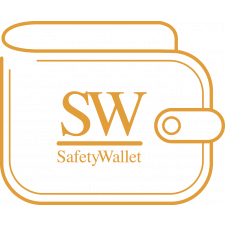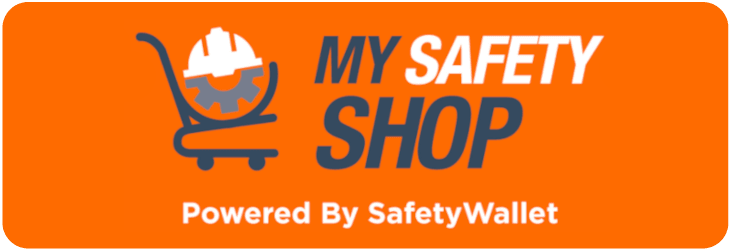Mastering Workplace Safety: A Comprehensive Guide to HIRA Training
Maintaining a safe and secure work environment is of paramount importance in any industry. Hazard identification and risk assessment (HIRA) play a pivotal role in ensuring the well-being of employees and preventing accidents. In our pursuit of a safer workplace, the Health and Safety Risk Assessment Training Course emerges as a beacon of knowledge and empowerment. This comprehensive course equips participants with the skills needed to proficiently identify workplace hazards and manage associated risks, ultimately fostering a secure and healthy work atmosphere.
Unveiling HIRA: The Foundation of Workplace Safety
HIRA, an acronym for hazard identification and risk assessment, forms the bedrock of an effective safety strategy. In essence, it involves recognising potential threats within the work environment and evaluating their associated risks. The Health and Safety Risk Assessment Course has been meticulously designed to arm individuals with the expertise required to conduct these crucial assessments.
Empowering through Risk Assessment Training
Delving into the depths of this course reveals a treasure trove of knowledge and practical skills. Participants are guided through a structured curriculum, aligned with registered unit standards. This ensures that learners not only comprehend the concepts but also apply them in real-world scenarios. The course features assignments and evidence portfolios, enabling participants to showcase their understanding and application of HIRA principles.
Empowering through Risk Assessment Training
Delving into the depths of this course reveals a treasure trove of knowledge and practical skills. Participants are guided through a structured curriculum, aligned with registered unit standards. This ensures that learners not only comprehend the concepts but also apply them in real-world scenarios. The course features assignments and evidence portfolios, enabling participants to showcase their understanding and application of HIRA principles.
Participants embarking on this transformative journey stand to gain an array of skills that are instrumental in safeguarding workplaces:
Understanding Legal and Specified Requirements:
Knowledge of regulations and standards governing risk assessment is paramount. Participants become well-versed in the legal landscape, ensuring compliance and adherence to established protocols.
Preparation for Risk Assessment:
A crucial step in risk assessment is data collection. This course equips participants with the ability to gather essential information and resources, laying the groundwork for effective hazard identification.
Methodical Risk Assessment:
Armed with appropriate techniques, participants learn to systematically identify hazards and evaluate their associated risks. This meticulous approach ensures a comprehensive assessment.
Implementing Remedial Actions:
Addressing identified hazards is a pivotal aspect of risk management. This training equips individuals to initiate remedial actions and monitor their effectiveness over time.
Who should attend the HIRA Training Course
This course isn't just for anyone; it's designed with specific roles in mind. It caters to a diverse audience, including supervisors, line managers, health and safety representatives, safety officers, contractors, subcontractors, and those appointed as Health and Safety Risk Assessors. Its reach extends to anyone responsible for health and safety risk management within the workplace.
This includes but is not limited to:
- Supervisors
- Line managers
- Health and Safety Representatives
- Safety Officer
- Contractors
- Subcontractors, and
- Candidates appointed as Health and Safety Risk Assessors.
Course Structure: Navigating the World of Risk Assessment
The course content is thoughtfully divided into essential modules:
- Legal and Specified Requirements: Navigating the regulatory landscape to conduct effective risk assessments.
- The Risk Assessment Process: A step-by-step guide from hazard identification to control implementation.
- Relevant Documentation: Understanding the importance of documenting risk assessment processes.
- Identifying Hazards and Risks: Focusing on specific workplace hazards and their associated risks.
- Promoting Teamwork in Assessments: Highlighting the collaborative nature of risk assessments and the role of effective communication.
- Preparation for Assessment: Selecting appropriate documentation, evaluating conditions, and verifying tools.
- Consequences of Non-Compliance: Understanding the potential fallout of not adhering to legal requirements.
- Conducting Risk Assessment: Correctly identifying hazards and evaluating them using chosen techniques.
- Initiating Remedial Action: Taking necessary steps to address hazards and ensuring follow-up.
- Consequences of Procedural Non-Compliance: Understanding the risks of not following correct procedures.
Methodology: Interactive Learning for Lasting Impact
The Risk Assessment Training Course employs a variety of engaging methods, ensuring participants' active involvement:
- Facilitator Presentations: Expert-led sessions that distill complex concepts.
- Readings: Educational resources to deepen understanding.
- Individual and Group Activities: Hands-on experiences for practical learning.
- Skill Application Exercises: Applying learned skills in simulated scenarios.
Reaping the Rewards of HIRA Mastery
Successful completion of this course yields a host of invaluable benefits:
- In-Depth Understanding: Participants master the risk assessment process, equipped to explain it fluently.
- Documentation Proficiency: Participants become well-versed in the necessary paperwork.
- Targeted Hazard Identification: Workplaces hazards become discernible, ensuring comprehensive assessments.
- Collaborative Mindset: The significance of teamwork and effective communication becomes evident.
- Holistic Evaluation: Participants gain expertise in evaluating physical and environmental conditions.
- Precise Hazard Identification: Skills to accurately identify hazards are honed.
The Risk Assessment Training Course arms individuals with the knowledge and skills needed to manage hazards in the workplace effectively. By fostering a safer and healthier working environment, this course stands as a testament to the power of education in enhancing workplace safety.
Identification of Health and Safety Workplace Hazards and Risks
During the compliance audit, experienced auditors conduct a thorough risk assessment of the workplace, identifying potential workplace hazards and risks that may jeopardise the health and safety of employees. These auditors are trained to recognise hazards in the workplace and evaluate the effectiveness of safety control measures in place. By identifying these hazards and risks, employers can take proactive measures to address them, minimising the likelihood of accidents or incidents occurring.
Click on the image below to find a SafetyWallet Solution that suits your business (Branch/Site specific) and get the benefits along with the subscription. 
MAKROSAFE's Health and Safety Compliance Audit offers numerous benefits to employers. From providing proof of legal compliance to identifying hazards and recommending improvements, this audit contributes to a safer working environment and protects the well-being of employees. By partnering with experienced auditors, employers can align their health and safety practices with their company's goals and demonstrate their commitment to employee welfare.
To book your Health and Safety Audit with MAKROSAFE, visit My Safety Shop and take a proactive step toward creating a safer workplace.
MAKROSAFE / SAFETYWALLET / MY SAFETY SHOP are in Partnership.


Comments (1)
A great blog explaining HIRA - Hazard Identification and Risk Assessment Training, crucial for maintaining a safe and secure work environment that is of paramount importance in any industry...
2023-08-29 08:35:43